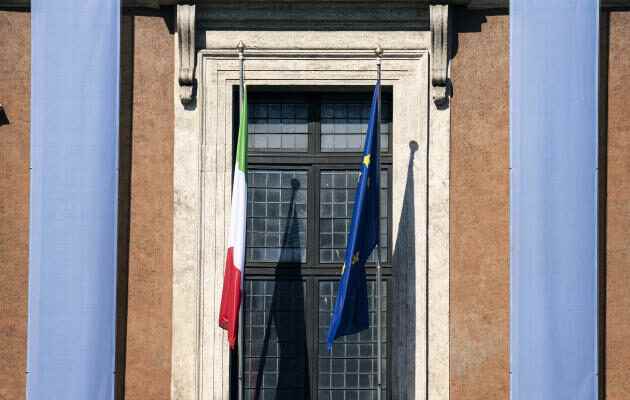An Italian flag on the left, the European banner on the right: the balcony of the Palazzo Venezia, overlooking the square of the same name, in the heart of historic Rome is basically quite plain, and if the travel guides mention it as a curiosity, the distracted walker can completely miss it. Nothing is done for it to attract attention. However, for years it played a special role in the daily life of the Romans. It was from there, in fact, that Benito Mussolini spoke on special occasions. Here, on the evening of May 9, 1936, he celebrated “the reappearance of the empire on the fatal hills of Rome” after the conquest of Ethiopia, and four years later, on June 10, 1940, he announced the declaration of war on France. Looking up at this window every evening, passers-by could see that the light in the Duce’s office remained on until the early hours. Mussolini, said the propaganda, “never sleeps” – even if no one was unaware that he had many other nocturnal activities than work.
After he had completed bringing Parliament into line and strengthened his power through the fascist laws (1925-1926), it was in this palace, located at the foot of the Capitol, that the new strong man of the country established his “HQ “. From 1929, he made this imposing medieval building the seat of fascist power and his official residence; without giving up his private residence, the villa Torlonia, located away from the center, made available to him for a rent of one lira per year.
When it came to impressing his visitors at the Palazzo Venezia, Mussolini received them in the overwhelming setting of the World Map room (12 meters high under the ceiling). The balcony – now condemned – allowed him to harangue the crowds massed in the square. Today, this same square is the main communication node of the city center, the obligatory point of passage between the narrow streets of the Rome of the Popes and the great open perspectives of the archaeological area. Among the thousands of visitors who admire it every day, how many realize what this urban landscape owes to the fascist regime? Very little, no doubt. And yet…
“It’s our symbol”
In two decades, Mussolini left a deep mark on the capital, giving it much of its current appearance. The traces of his actions are everywhere, if you pay attention, and they have never been erased. In Rome, the present never completely supplants the past, one and the other coexist rather than clash.
You have 76.64% of this article left to read. The following is for subscribers only.
